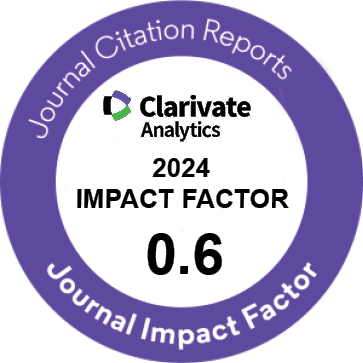| Original Article | |
| Relationship Between Placental Calcification and Estimated Fetal Weight Percentile at 30-34 Weeks of Pregnancy | |
| Mojgan Barati1, Sara Masihi1, Elnaz Barahimi1, Mohammad Ali Khorrami2 | |
| 1Faculty of Medicine, Fertility, Infertility, and Perinatology Center, Ahvaz Jundishapour University of Medical Sciences, Ahvaz, Iran 2Department of Cellular Anatomical and Physiological Sciences, Faculty of Science, University of British Columbia, Vancouver, Canada |
|
|
IJWHR 2019; 7: 478-482 DOI: 10.15296/ijwhr.2019.79 Viewed : 4307 times Downloaded : 6074 times. Keywords : Placental calcification, Small for gestational age, Uterine artery pulsatility index Doppler |
|
| Full Text(PDF) | Related Articles | |
| Abstract | |
Objectives: The identification of at-risk fetus is considered as one of the most difficult challenges for clinicians and researchers although the clinical significance of placental calcifications (PCs) and its relation to adverse pregnancy outcome are controversial. Therefore, the present study aimed to evaluate the relationship between PC and estimated fetal weight (EFW) percentile at 30-34 weeks of pregnancy. Materials and Methods: This prospective cross-sectional study was carried out on all pregnant women except for multiple pregnancy subjects who were admitted to an outpatient perinatal center from October 2016 to September 2018. Several parameters were measured at 30-34 weeks of pregnancy, including EFW, umbilical artery pulsatility index (PI), middle cerebral artery PI, cerebroplacental ratio (CPR), right and left uterine artery PI, along with right and left uterine artery notch. Finally, the calcification of the placenta with any shape and degree was determined as well. Results: In this study, 739 pregnant women were evaluated for PC, including patients with PC (9.87%), small-for-gestational age (SGA, 3.65%), and those with at least one abnormal Doppler index (23.95%). Patients with PC and those with at least one abnormal Doppler index had significantly higher SGA (29.62% and 12.42%, respectively). In addition, there were 55.55% and 30.13% patients with SGA and PC in the group with at least one abnormality in terms of Doppler indices. Conclusions: In general, the findings showed that PC is more common in SGA. Based on the results, at least one abnormality in Doppler indices was more common in PC and SGA, and uterine artery Doppler abnormality was the most prevalent abnormal findings in the arterial Doppler. Thus, PC may be an important marker for adverse pregnancy outcomes. |
Cite By, Google Scholar
Google Scholar
PubMed
Online Submission System
 IJWHR ENDNOTE ® Style
IJWHR ENDNOTE ® Style
 Tutorials
Tutorials
 Publication Charge
Women's Reproductive Health Research Center
About Journal
Publication Charge
Women's Reproductive Health Research Center
About Journal
Aras Part Medical International Press Editor-in-Chief
Arash Khaki
Mertihan Kurdoglu Deputy Editor
Zafer Akan























